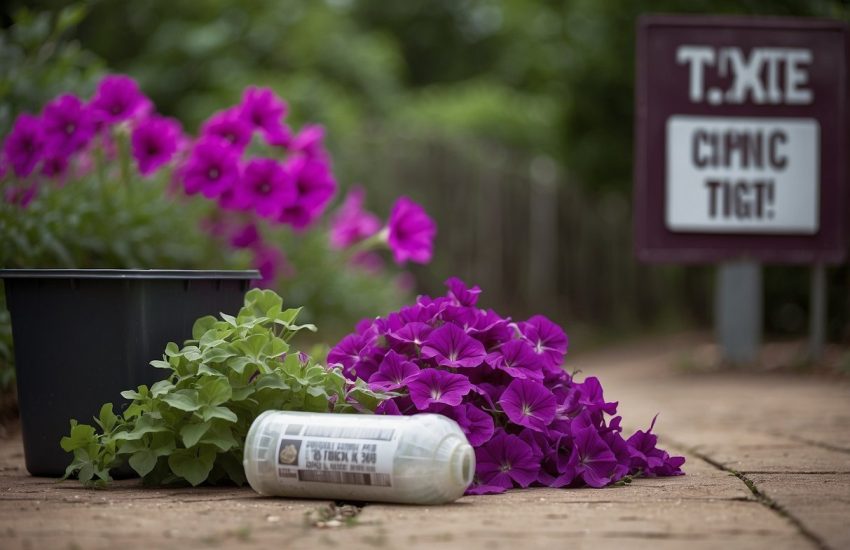Heat Resistant Plants: Best Options for Your Garden
Heat-resistant plants are a great addition to any garden, especially during the summer months when temperatures rise. These plants are capable of withstanding high temperatures and drought conditions, making them an ideal choice for those who live in hot and arid climates.

One of the most important factors to consider when selecting heat-tolerant plants is their ability to survive in harsh environments. These plants have adapted to hot and dry conditions, which means they require less water and can withstand high temperatures without wilting or dying. Some popular heat-resistant plants include succulents, cacti, and agave, all of which are known for their ability to thrive in hot and dry conditions.
In addition to their practical benefits, heat-resistant plants also add a unique aesthetic to any garden. With their vibrant colors and interesting textures, these plants can create a striking contrast against traditional garden plants. Whether you are looking to create a desert-inspired garden or simply want to add some variety to your existing landscape, heat-resistant plants are a great option to consider.
Selecting Heat Resistant Plants
When it comes to selecting heat-resistant plants, there are a few things to keep in mind. Understanding plant hardiness zones, choosing between annuals and perennials, and selecting the best plant species for high heat are all important factors to consider.
Understanding Plant Hardiness Zones
Plant hardiness zones are determined by the United States Department of Agriculture (USDA) and are based on the average minimum temperature of a region. It is important to choose plants that are suitable for the specific hardiness zone in which they will be grown. This ensures that the plants will be able to tolerate the temperature extremes of that region.
Annuals Versus Perennials
Annuals are plants that complete their life cycle in one growing season. They are great for adding color to a garden but may not be the best choice for areas with high heat. Perennials, on the other hand, live for multiple growing seasons and are better suited for areas with high heat. They have deeper root systems that allow them to withstand periods of drought and high temperatures.
Best Plant Species for High Heat
There are many plant species that are well-suited for high heat conditions. Some examples include:
- Succulents: These plants store water in their leaves, making them great for hot, dry climates.
- Cacti: Like succulents, cacti are adapted to arid environments and are able to store water in their stems and leaves.
- Ornamental grasses: These plants have deep root systems that allow them to withstand drought and high temperatures.
- Lavender: This fragrant herb is not only heat-resistant but also attracts pollinators to the garden.
- Daylilies: These perennials are known for their ability to withstand high temperatures and bloom in a variety of colors.
By selecting heat-resistant plants that are suitable for the specific hardiness zone and growing conditions, gardeners can create a beautiful and thriving garden even in areas with high heat.
Caring for Heat-Tolerant Plants
Heat-tolerant plants are a great addition to any garden, as they can withstand high temperatures and require less maintenance than other plants. However, they still need proper care to thrive. Here are some tips for caring for your heat-tolerant plants.
Watering and Maintenance
Watering is essential for all plants, but heat-tolerant plants require less water than other plants. It is important to water them deeply and less frequently, allowing the soil to dry out between watering. This will encourage the roots to grow deeper, making the plant more resilient to drought. It is also important to remove any dead or diseased leaves and flowers regularly to prevent the spread of disease.
Soil and Sunlight Requirements
Heat-tolerant plants prefer well-draining soil that is rich in nutrients. Adding organic matter such as compost or manure can improve the soil quality. These plants also thrive in full sun, but some can tolerate partial shade. Make sure to read the plant label or do research to determine the specific sunlight requirements of your plant.
Attracting Pollinators and Wildlife
Heat-tolerant plants can attract a variety of pollinators and wildlife, such as butterflies, bees, and hummingbirds. To attract these beneficial creatures, plant a variety of flowers with different colors, shapes, and sizes. Avoid using pesticides and herbicides, as they can harm these important creatures.
By following these tips, you can ensure that your heat-tolerant plants thrive and add beauty to your garden.

